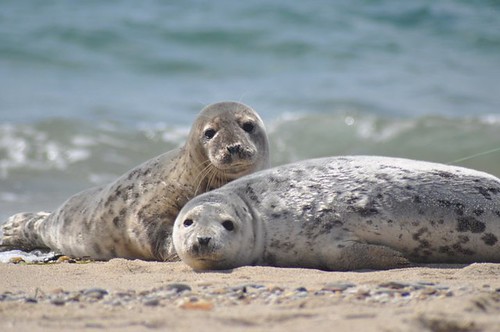Seals are one of the fascinating animals on the planet. Their unique physiology, behavior, and habitat make them truly remarkable creatures. Here are nine amazing facts about seals that you may not know!
Seals Are Related to Bears, Skunks, and Badgers
Seals belong to the family Phocidae, which also includes walruses and sea lions. This family is part of the order Carnivora, which also has cats, dogs, bears, skunks, and badgers. So while seals may look like fish when they swim in the water, they’re more closely related to land mammals than aquatic ones!
“Earless” True Seals Do Have Ears
Authentic seals (Phocidae) are sometimes called “earless” seals because their ear openings are hidden beneath a layer of fur. But don’t be fooled – these animals do have ears! They can’t move them independently as other mammals can.
The Largest Seal Weighs More Than Four Times as Much as an Average Human
The largest seal species is the southern elephant seal (Mirounga leonina). These animals can weigh up to 4 tons – more than four times as much as an average human! Southern elephant seals also have some of the most extended dives of any mammal – they can stay underwater for up to two hours at a time!
Seals Have Feet Shaped Like Fins
All seals have feet shaped like fins. This helps them move quickly through the water with minimal effort. The word pinniped means “fin-footed” in Latin!
Most Seal Species Live in Large Social Groups Called Colonies
Most seal species live in substantial social groups called colonies. The size of these colonies can range from just a few individuals to thousands! These colonies typically gather on land or sea ice to mate and raise young.
Some Seals Migrate Hundreds of Miles Every Year in Search of Food
Some seal species migrate hundreds of miles every year in search of food. For example, harbor seals (Phoca vitulina) migrate along coasts from Alaska to California yearly for prey such as salmon and herring.
Seals Have Thick Layers of Blubber for Protection From Cold Water Temperatures
Seals are protected from cold water temperatures by thick layers of fat beneath their skin. This fat helps keep them warm even when swimming in icy waters!
When Seals Dive, Their Brain Temperature Falls
When seals dive underwater, their brain temperature falls significantly due to increased blood flow away from their head and toward their muscles for swimming efficiency. This allows them to conserve energy while diving deep into cold waters for long periods without getting too hard themselves!
The Baikal Seal is the Only Freshwater Seal in the World
The Baikal seal (Pusa sibirica) is found only in Lake Baikal in Siberia – making it the only freshwater seal species on Earth! It’s also one of the smallest seal species, with adults weighing 110-220 pounds (50-100 kg).


